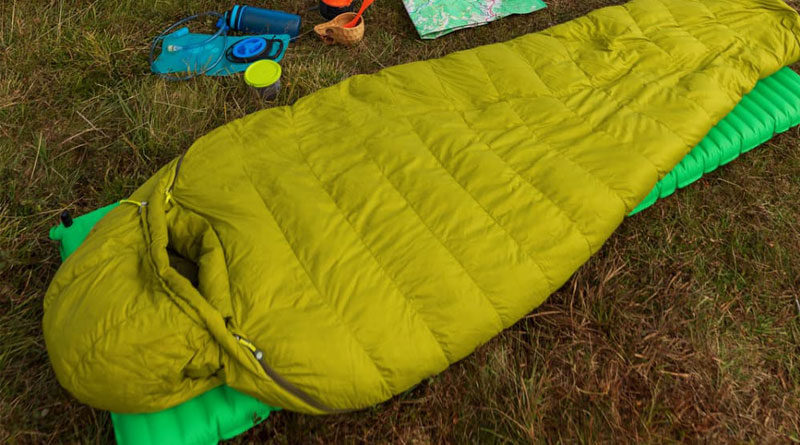Do You Put Sleeping Pads Inside Or Outside The Bag?
Sleeping pads are an essential part of your sleeping system. They provide insulation and comfort from the cold and hard ground. But should you put your sleeping pad inside or outside of your bag? Sleeping pads were originally made to put under the sleeping bag outside of it. In the past, sleeping pads used to be very heavy and bulky. But with advancements in technology, they have now become extremely lightweight which allows them to go even inside a sleeping bag with enough room for you to sleep.
If you want to know whether putting the pad inside or outside is better, then there is no clear answer. It comes down to personal choice and circumstances. Whether you put the pad inside the sleeping bag or outside of it, there are going to be upsides and downsides to it.
Reasons to put it outside
You would want to put your sleeping pad outside your sleeping bag for the following reasons:
It is meant like that
Sleeping pads were made to put under the sleeping bag from the beginning. The whole idea was to add a layer of insulation under your sleeping bag. A sleeping bag can’t keep you insulated from the cold ground because it gets compressed.
The insulation inside the sleeping bag works by trapping air in between its layers. Since air is a bad conductor of heat, your body heat doesn’t escape to the ground. But insulation requires loft to perform this function.
Your body weight compresses the loft and squeezes the air out of the insulation making it lose its insulation capability. A sleeping pad is added under the sleeping bag to keep your body insulated from beneath.
More room inside the sleeping bag
Sleeping bags already have tight dimensions unless you are using one bigger than you require. This is especially true if you have a mummy bag. Mummy bags are already cramped and don’t have enough room to move. If you squeeze in a sleeping pad, it will considerably lower the space you have inside your bag.
This isn’t a problem if you are a skinny person but for someone with generous proportions, it won’t be comfortable by any means. Besides, many sleeping pads are too large to fit inside a sleeping bag so you would have to buy another bag or pad to make them fit. But you can get lucky and own a pad that already fits inside your bag.
Less room for air
Sleeping bags, especially mummy bags, are made to hug the body snugly so that they can trap body heat. They wrap around the body like a cocoon. With a sleeping pad inside, you can’t completely close the bag around your body leaving room for cold air to creep in. It also leaves space for drafts. You might not notice this in mild conditions but it will make you uncomfortable during cold nights.
No dimension measurements
If you put a sleeping pad outside of your sleeping bag, you don’t have to worry about compatibility issues. That is, you don’t have to carefully measure the dimensions of your bag and pad to see if your pad would fit inside your bag (does that even make sense to you?).
Most sleeping pads have adequate dimensions to put a bag over them without any problems. But if you try to put your pad inside the bag, you have to make sure that the pad fits inside. That requires an annoying measurement of your bag and pad or going through the manufacturer’s description for both of them. It is also worthy to note that there is often a difference between real-life figures and the figures claimed by the manufacturer in the product description. You should avoid cutting it close if you are considering the manufacturer’s description of the products.
Reasons to put it inside
Following are the reasons that you may want to put your pad inside your sleeping bag if you can manage to:
Prevents the bag and the pad from slipping
A major problem with sleeping pads is that they tend to slip from underneath the sleeping bag or people tend to roll off the pad during the night. In both cases, the cold creeps into the sleeping bag and you get up in the night shivering. Sleeping pads turn into magical items in the night that teleport from one corner of the tent to the other.
Learn more about how to attach a sleeping bag to a pad here.
The problem is more prominent with air pads. The issue is the slippery material of the pads. It is hard to keep the pad in one place while you are sleeping. The other issue is that people who are habitual of sleeping on king-size beds easily roll off the pad due to the pad’s narrow dimensions.
Learn more about how to keep your sleeping pad from sliding in a tent here.
Keeping the pad inside the sleeping bag is an excellent way to tackle this slipping and rolling-off problem. Since the bag completely encapsulates the pad, the pad has nowhere to go. You stay on top of the pad and it stays in its place.
Protection for air pads
Air pads are susceptible to getting punctured easily. If you are in a tent, the tent floor does protect an air pad and air pads are durable themselves as well. But pointy rocks and small branches can still protrude from the floor of the tent if you don’t clear your campground properly. These rocks and branches can puncture an air pad.
Putting the air pad inside the bag provides another layer of protection to the air pad. But you would have to keep in mind that air pads are very thick once inflated. You have to have enough space in your sleeping bag to accommodate an air pad adequately.
Easier to double up pads
Putting sleeping pads over each other is difficult to manage because pads slip over each other. You put both of the pads inside the bag so both of them stay in place. Doubling up the pads increases their combined R-value.
But trying to stuff two air pads in a sleeping bag is a challenge. As mentioned above, air pads become very thick after being inflated. However, you can make it work with two foam pads because they are thin.
One other way to use two sleeping pads is that many people keep a foam pad to protect their air pad. If you are one of them, you can put the air pad inside the bag and the foam pad under the sleeping pad.
Pads don’t scrunch
Foam pads often scrunch up as you move around because they are very thin. If the pad scrunches you might be left without a pad. You will most likely wake up cold in the middle of the night because of the cold. Putting foam pads inside the bag makes them less likely to scrunch.
Any difference in warmth?
Many people argue whether putting the pad inside or outside of the sleeping bag provides more warmth. Articles on the internet also have a mixed narrative with some claiming that putting the pad inside provides more warmth and others claiming the opposite.
Since this hasn’t been tested scientifically at any level, anything about this matter is just a rant. Those in the favor of putting it inside claim that it traps more heat inside the bag providing more insulation while those in favor of putting it outside of the bag claim that it doesn’t let the fill of the bag be compressed.
But if you put some thought into it, both arguments may be wrong (again, this is just a rant with no scientific background). I think putting the pad inside or outside the bag has a negligible effect on warmth if any.
The fill of the bag gets compressed in every way once you put weight on it and it doesn’t matter if the pad is inside or outside. The combined R-values of the bag and the pad should provide the same amount of insulation no matter where you put the pad.
So, as a hypothesis, it shouldn’t make any difference unless scientifically proven otherwise. I think it all comes down to personal preference and management. If you can keep the pad from slipping and sliding and want more space for yourself in the sleeping bag, the pad goes outside. If you want to keep the pad in place and want more protection for your air pad, then put it inside the sleeping bag.
Conclusion
A sleeping pad is an essential part of the sleeping system while camping. Putting the sleeping pad inside or outside, both, have advantages and disadvantages. There is no clear answer here and it comes down to personal choice and circumstances. The pad outside the bag slips and slides from under but gives you more space inside your sleeping bag. Putting the pad inside keeps it in place and if it’s an air pad, it is protected by the extra layer of the bag. But you won’t have any space inside. I believe that there is no gain in warmth putting the pad either way. But that’s just my point of view as no scientific method has been applied to prove which way is better to boost warmth.




